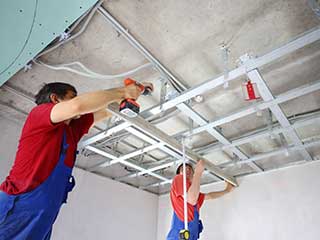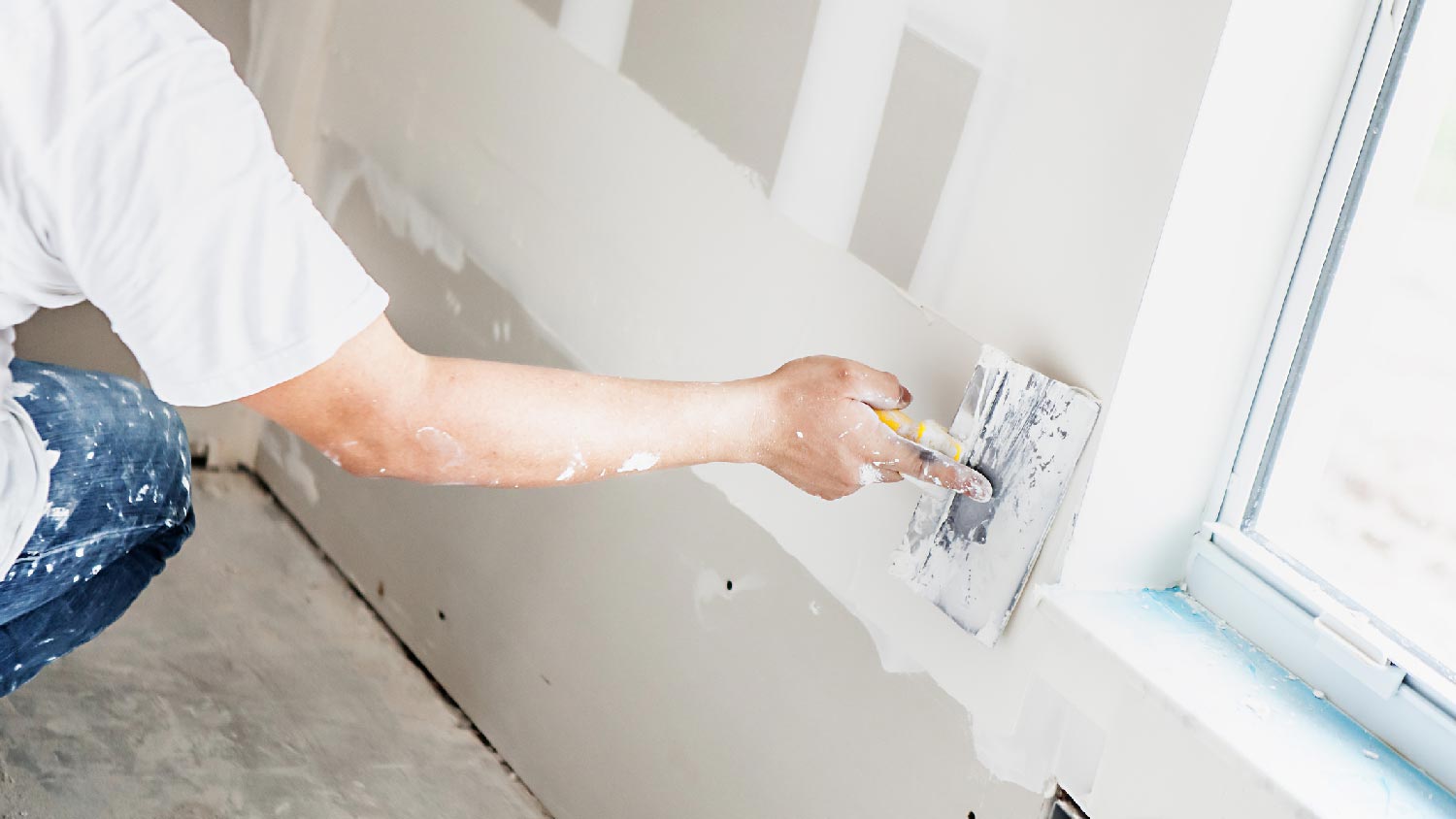Discover the most effective Practices for Successful Drywall Repair and Installation
The art of drywall fixing and installment needs a blend of skill and accuracy. Mastering the vital devices is vital for accomplishing a seamless surface. Recognizing the detailed procedure can make a considerable distinction in the result. Correct strategies for taping and mudding are also critical. What continues to be is the understanding of upkeep that guarantees durability. These aspects together produce a refined end result worth checking out even more.

Vital Tools for Drywall Repair Work and Installation
When carrying out drywall repair service and installation, having the right tools can substantially boost the efficiency and quality of the work. An energy blade is necessary for reducing drywall sheets precisely, while a drywall saw can help in making more elaborate cuts. Taping knives, offered in different sizes, are important for using joint substance efficiently and uniformly. A drywall sander, preferably with a dirt collection feature, assists attain a sleek coating, minimizing the demand for substantial clean-up.
Furthermore, a measuring tape warranties accurate dimensions, and a degree makes certain that installations are straight and plumb. Security equipment, including dust masks and safety glasses, should not be ignored to protect versus particles and dirt. Finally, a stud finder aids in finding framing participants, guaranteeing safe installment. By gearing up oneself with these necessary devices, the repair work and installation process becomes a lot more manageable and results in a professional-quality result.

Step-by-Step Overview to Patching Holes
Covering holes in drywall requires a methodical approach to assure a smooth fixing. The location around the opening must be cleaned up and any kind of loose debris got rid of. For small holes, a putty blade can be used to use a lightweight spackle, pushing it into the hole and smoothing the surface area. After it dries, sanding is vital to develop a flat surface. For larger openings, a spot of drywall may be needed. This includes cutting a piece of drywall slightly bigger than the opening, protecting it to the wall with screws, and utilizing joint substance to cover the joints. Once the substance dries, it should be fined sand smooth. Priming the patched location before paint will guarantee an even finish. Following these actions will cause a professional-looking repair work that blends flawlessly with the surrounding wall.
Techniques for Seamless Drywall Installation
Attaining smooth drywall installment needs mindful planning and implementation. It is essential to determine and reduce drywall sheets accurately to decrease voids. Making use of an utility blade, installers ought to score the board prior to snapping it along the cut line, making certain tidy sides. Effectively straightening the sheets is essential; starting from the top and functioning down helps preserve harmony.
Securing drywall to the studs calls for regular spacing, commonly every 16 inches, utilizing screws as opposed to nails for better hold. This method reduces the risk of stands out over time. Additionally, staggering the seams in between sheets improves structural honesty and lowers the important source presence of joints.
Lastly, using the right density of drywall for details areas-- such as moisture-resistant enters washrooms-- more adds to a perfect finish. Following these strategies will certainly result in a professional-looking and smooth installment, setting the stage for the succeeding ending up processes.
Ending Up Touches: Taping and Mudding
Ending up touches, such as mudding and taping, play a necessary duty in accomplishing a polished drywall surface. Taping entails using a slim strip of drywall tape over the joints and joints, guaranteeing a seamless look. This process assists protect against fractures and creates a solid bond in between drywall sheets. It is vital to pick the appropriate kind of tape, with paper and fiberglass mesh being one of the most usual choices.
Mudding, or using joint compound, adheres to taping. This compound fills out spaces and smooths out the surface area for a consistent surface. It is generally used in several layers, with each layer requiring to dry prior to fining sand. Proper method includes feathering the edges to blend the compound right into the bordering drywall, lessening exposure.
When finished properly, mudding and taping improve both the visual and structural stability of the drywall setup, leading to a professional-quality finish.
Tips for Preserving Your Drywall After Installment

In addition, keeping a consistent interior humidity degree can prevent warping or mold and mildew see here growth. Utilizing a dehumidifier in wet locations, like cellars, is suggested. It's likewise advantageous to regularly repaint locations that show wear, as this safeguards the underlying material. Lastly, when relocating furniture or mounting fixtures, care needs to be worked out to stay clear of harming the drywall. By complying with these upkeep pointers, home owners can extend the life of their drywall, safeguarding it stays an attractive feature of their interiors.
Regularly Asked Concerns
What Safety Gear Is Needed for Drywall Repair Work and Installation?
For drywall fixing and installment, vital security equipment consists of security goggles to secure eyes, dirt masks to prevent breathing of bits, gloves for hand defense, and knee pads for comfort throughout prolonged kneeling. drywall contractor.
How Do I Determine the Drywall Thickness Needed for My Job?
To identify the drywall density required for a job, one ought to take into consideration the wall surface's structural requirements, regional building codes, and the intended usage of the space, commonly choosing for 1/2-inch or 5/8-inch drywall.
Can I Repair Drywall Without Removing Furnishings From the Room?
Yes, drywall can be fixed without eliminating furniture from the area. Careful planning and protective steps can minimize mess, enabling reliable repairs while maintaining bordering items safe from dirt and damage throughout the procedure.
What Sorts of Drywall Are Best for Different Settings?
Moisture-resistant drywall is suitable for cooking areas and bathrooms, while soundproof drywall suits shared walls in houses. Fire-rated drywall is best for garages, and standard drywall works well as a whole living locations, guaranteeing resilience and viability for various atmospheres.
How much time Does It Take for Drywall Mud to Dry Completely?
Drywall mud usually takes 24 to two days to dry totally, depending on aspects like moisture and temperature level (Interior Painting). Thicker applications may need longer drying out times, while thinner layers can dry quicker. Appropriate ventilation help drying out
The art of drywall repair and installment requires a blend of skill and precision. When undertaking drywall repair and installment, having the right devices can considerably improve the reference performance and high quality of the job. An utility knife is vital for reducing drywall sheets exactly, while a drywall saw can assist in making more elaborate cuts. Achieving seamless drywall setup needs careful planning and execution. Moisture-resistant drywall is excellent for kitchen areas and shower rooms, while soundproof drywall fits shared wall surfaces in homes.